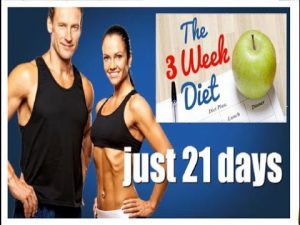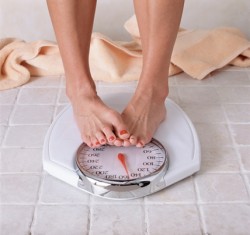wikiHow to Jump Start the Atkins Diet
Over the past 15 years, the Atkins Diet has become one of the most popular and commonly used diets for weight loss. Originally conceived in 1972 by Dr. Robert Atkins, this low-carb regimen has been met with equal parts praise from dieters and skepticism from doctors and nutritionists.[1] The diet is carried out in phases, but the most drastic change in your daily eating routine will most likely be found in Phase I: Induction.
Steps
Part 1 Completing the Induction Phase
-
1
Remove most carbohydrates. The Induction phase is meant to last for 14 days and the biggest overhaul you will make is your carbohydrate intake. In this phase you are only allowed 20 grams of carbohydrates each day -- 12-15 of those grams must be from vegetables like broccoli, asparagus and green beans.[2]
- General nutritional guidelines recommend that you consume 45-65% of your calories from carbohydrates. During the Induction phase of Atkins, only 10% of your calories should come from carbs.[3]
- You will have to remove all breads, pastas, oatmeal, cereal and sugary foods like ice cream, cookies, cakes, brownies. [4]
- Fruit and starchy vegetables (like potatoes) are also off limits during this phase.
-
2
Add in protein. You are meant to supplement the lack of carbs with additional protein and fats during this phase. You can eat a variety of fish, shellfish, poultry, pork, beef, and eggs when you are in Induction.
- Dairy products such as cheese, cream and sour cream are also allowed at this phase. But you should avoid other dairy products like milk and yogurt because these often contain carbs and sugar.[5]
- 3 Increase your fat intake. It might sound strange, but Atkins is pro-fat when it comes to butter, oil, cream and mayonnaise (that doesn't have sugar). It is perfectly acceptable to prepare and dress foods with these items.[6]
- 4 Eliminate alcohol. If you have a happy hour to attend, then get excited for your glass of sparkling water because alcohol is not allowed during the Induction phase. The diet also recommends that you consume 8 glasses of water a day.[7]
-
5
Find sample recipes and meal plans. Due to the popularity of the Atkins diet, it is easy to find ideas for creating satisfying meals for Phase I. Here are some options for your different meals:
- Breakfast: Bacon, Avocado and Pepper Jack Cheese Omelet; Canadian Bacon Topped with Cheddar and Tomato; Frittata with Chorizo and Green Chili; Scrambled Eggs with Cream; or Dill and Smoked Salmon.[8]
- Lunch: Egg Salad; Chicken Salad; Tuna Salad; or Broth or Cream Based Soups (except for potato or soups containing noodles).[9]
- Dinner: Roasted Balsamic Pork Loin with Rosemary Cauliflower; Beef Fillet with Bacon and Gorgonzola Butter; Bratwurst with Onion and Sauerkraut; Chicken Cacciatore; Chicken Breasts with Tarragon Cream Sauce; or Blackened Fish (Salmon, Chard, Halibut). [10]
-
6
Monitor your progress. It is important to keep track of your progress so you can see how your body responds to the Induction phase. Keep a weight loss/food journal and weigh yourself daily (or a few times a week).[11]
- Note which foods you consume and how many net carbs you take in each day. Atkins has a carb calculator that can help you determine this by ingredient.[12]
- Be sure to weigh yourself at the same time each day. Most doctors recommend weighing yourself in the morning and stepping on the scale naked so you can get the most accurate reading of your weight.[13]
Part 2 Avoiding Common Pitfalls
-
1
Consume enough vegetables. Because you can only consume 12-15 grams of vegetable-based carbs during Induction, you might be tempted to skip them altogether. Avoid doing this as vegetables are an important source of fiber and valuable vitamins.[14]
- Cucumber, cauliflower, broccoli, asparagus and leafy greens like spinach, kale and lettuce are all appropriate to consume in Phase I.[15]
-
2
Count carbs properly. In the Atkins diet, you are supposed to count the number of net carbs in an ingredient, not the total number of carbs. You can calculate the net carb amount by subtracting the grams of fiber from the total grams of carbs in the item.[16]
- For example, if a half-cup of uncooked broccoli has 2.3 grams of total carbs and 1.3 grams of total fiber, then the net carb value is 1 gram.[17]
- Again, use the Atkins carb counter to get an accurate reading.[18]
-
3
Beware of hidden carbs. When you go to buy food in the grocery store, stick to the produce and meat sections. Avoid buying processed foods, which are typically found in the aisles in the middle of the store.[19]
- If you do buy processed foods, make sure you check the number of calories and sugar in the ingredients list. Just because something is listed as low-calorie or organic does not mean it is suitable for an Atkins diet.[20]
-
4
Get enough sleep. Getting 7-9 hours of sleep each night is a vital part of a healthy life and a key asset to a weight loss regimen. [21]
- Sleep provides improvements in our immune systems, metabolism, and strengthens the function of memory.[22]
Part 3 Learning the Risks of the Atkins Diet
-
1
Talk to your doctor. Before you begin any diet that eliminates most of a major food group from your diet, talk to your doctor if this is a right choice for you. You should avoid Atkins if you suffer from kidney disease or are taking medications for diabetes.
- There haven't been any major studies that have shown long term benefits in terms of weight loss and improved health from the Atkins diet.[23]
- The Induction phase is also not appropriate for women who are pregnant or breastfeeding.[24]
-
2
Beware of potential side effects. Keep in mind that a radical change to your diet can result in some negative side effects. If you experience any of these side effects, talk to your doctor about modifying your diet or adding in healthy carbs like whole grain breads and whole wheat pasta.[25] Some of the potential side effects of the Atkins diet include:
- Nausea
- Headaches
- Feelings of irritability
- Dizziness
- Constipation
-
3
Focus on improving your overall health. The Atkins diet promises major results within the Induction phase. And while you might find it will help you lose weight quickly, there is no evidence that diets which eliminate entire food groups (like carbs, sugars or fat) are sustainable for long term weight loss.[26]
- The Atkins diet initially suggested that exercise was not necessary for its practitioners, but now it stipulates that exercise can help you succeed in weight loss. Aim for 30 minutes of cardio exercise (like walking, running, hiking, swimming, biking), 3-4 times a week.[27]
-
Use These Great Weight Loss Tips To Help You Succeed
Anyone can shed weight as long as they know the things that they sho
-
How To Navigate Holiday Parties All Year Long
Youre cruising along on your new diet when you run up against the year
-
Losing Weight By Adopting Healthy Eating Habits
If you are planning to lose a few extra pounds, the best way to tackl
-
Tops Tips About Acid Reflux That Anyone Can Follow
TIP! Your acid reflux symptoms worsen whenever you eat a lot.
-
Are You Addicted To Food?var zeus = zeus
For nearly 15 years, Dana Littleton ate chocolate practically all day
-
Natural Weight Loss
Natural loss is popular subject these days among the thousands o
- DON'T MISS
- Weight Loss Tip #108 – Do what Karisma Kapoor does when she craves junk food
- Towel Workout
- Say Goodbye To Emotional Eating
- Busted! 6 Major Eating Mistakesvar zeus = zeus
- Healthy Weight Loss Advice - The Importance Of A Good Nights Sleep
- Eliminating Stubborn Belly Fat - Get Visible Abs With These Lifestyle Secrets
- Detox Cleansing - Natural Way to Lose Weight
- Value System and Weight Loss
- The Worst Time Of Day To Eat Is…
- Suggestions To Follow As You Begin Your Weight Loss Journey




